
WPC Wall Panels: UV Resistance for Long-Lasting Outdoor Use

Imagine stepping onto your patio on a bright, sunny morning—the warm glow of sunlight, the fresh breeze, and the sight of your outdoor space looking just as vibrant as the day it was built. For homeowners, business owners, and architects alike, outdoor areas are more than just extensions of a building; they're where memories are made, customers are welcomed, and first impressions are formed. But there's a silent threat lurking in that sunlight: ultraviolet (UV) radiation. Over time, UV rays can fade colors, weaken materials, and turn once-beautiful exteriors into dull, weathered eyesores. This is where WPC wall panels step in—a modern solution that blends durability, aesthetics, and resilience to keep outdoor spaces looking their best, year after year. As a leading building material supplier specializing in exterior decoration materials, we've seen firsthand how WPC wall panels are transforming outdoor design, offering a level of UV resistance that traditional materials simply can't match. In this article, we'll explore why WPC wall panels are the ideal choice for long-lasting outdoor use, diving into their composition, UV-resistant technology, real-world applications, and how to choose the right wpc wall panel supplier to bring your vision to life.
What Are WPC Wall Panels?
Before we delve into their UV-resistant superpowers, let's start with the basics: What exactly are WPC wall panels? WPC, or Wood Plastic Composite, is a innovative material that combines the best of two worlds: the natural look and feel of wood, and the durability and low-maintenance benefits of plastic. Unlike solid wood, which is prone to rot, warping, and insect damage, or pure plastic, which can feel artificial and brittle, WPC is engineered to balance aesthetics and performance.
At its core, WPC is made from a blend of wood fibers (often recycled sawdust, wood chips, or bamboo fibers) and thermoplastic resins (like polyethylene, polypropylene, or PVC). These ingredients are mixed with additives such as UV stabilizers, colorants, lubricants, and flame retardants, then heated, extruded, and molded into panels of various sizes, textures, and finishes. The result? A material that looks and feels like wood—with grains, knots, and textures that mimic natural timber—but stands up to the elements in ways wood never could.
WPC wall panels have gained popularity in recent years as exterior decoration materials, thanks to their versatility. They can be used for everything from accent walls and privacy screens to full exterior cladding, and they come in a range of colors—from warm browns and grays to bold blacks and whites—to suit any design style. Whether you're aiming for a rustic cabin vibe or a sleek modern aesthetic, there's a WPC panel to match. And because they're made with recycled materials (many manufacturers use up to 70% recycled content), they're also an eco-friendly choice, reducing the need for virgin wood and plastic.
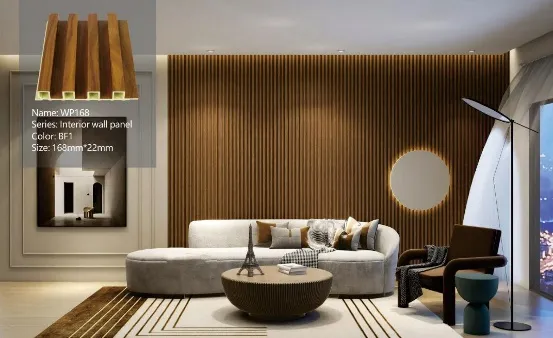
The Science Behind WPC's UV Resistance: Why It Matters
UV radiation is a silent destroyer of outdoor materials. From wooden decks that fade to gray within a year to plastic furniture that cracks and becomes brittle, the sun's rays break down molecular bonds, causing discoloration, structural weakening, and loss of flexibility. For exterior wall panels, this isn't just a cosmetic issue—faded or damaged panels can compromise a building's insulation, weatherproofing, and overall curb appeal, leading to costly repairs or replacements.
So, how do WPC wall panels stand up to this threat? The answer lies in their engineering. Unlike untreated wood or basic plastic panels, WPC is formulated with UV stabilizers—specialized additives that absorb or scatter UV radiation before it can damage the material's structure. These stabilizers work in two key ways: some (like hindered amine light stabilizers, or HALS) neutralize the free radicals created by UV exposure, preventing them from breaking down the plastic polymers. Others (like benzotriazoles or benzophenones) act as absorbers, soaking up UV rays and converting them into harmless heat.
But UV resistance isn't just about additives. The color and texture of WPC panels also play a role. Darker colors, for example, can absorb more heat, which might affect long-term durability, but modern WPC formulations use pigments that are UV-stable, meaning they won't fade even in intense sunlight. Many manufacturers also offer textured surfaces, which not only enhance the wood-like appearance but also scatter UV rays, reducing their impact on the panel's surface.
To put this to the test, let's look at industry standards. Accelerated weathering tests, such as those conducted using QUV testers, simulate years of outdoor exposure in a matter of weeks. A high-quality WPC wall panel should show minimal color change (often less than 5 Delta E, a unit of color difference) after 1,000 hours of UV exposure—equivalent to roughly 5-7 years of real-world sunlight in most climates. In contrast, untreated wood might show significant fading (15+ Delta E) in just 200 hours. For regions with intense sun, like Saudi Arabia, where temperatures soar and UV index levels regularly exceed 10, this level of resistance is not just a bonus—it's a necessity.
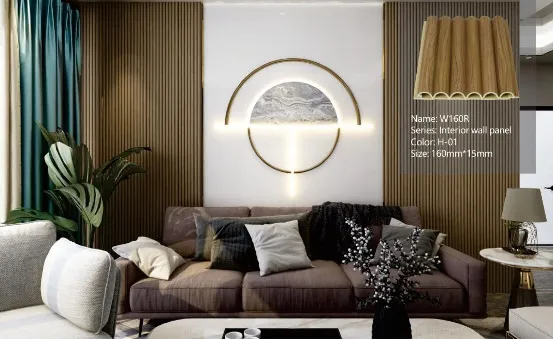
WPC vs. Traditional Materials: A Clear Advantage
To truly appreciate WPC's UV resistance, it helps to compare it to other common exterior wall materials. Let's break down how WPC stacks up against wood, PVC, and natural stone—the three most popular alternatives.
Wood: Natural wood is beloved for its warmth and character, but it's a high-maintenance choice for outdoor use. Without regular staining, sealing, or painting (usually every 1-2 years), wood will fade, warp, crack, and rot. Even with maintenance, UV rays break down the lignin in wood, turning it gray and brittle over time. Insects, moisture, and fungi only add to the problem. WPC, on the other hand, requires no sealing or staining—just an occasional rinse with soap and water to keep it looking fresh.
PVC: PVC panels are lightweight and affordable, but they're not designed for prolonged UV exposure. Pure PVC lacks the additives needed to resist UV rays, so it can become brittle, chalky, and discolored over time. While some PVC products claim UV resistance, they often can't match the durability of WPC, which combines plastic with wood fibers for added strength and stability.
Natural Stone: Stone like granite or marble is incredibly durable and UV-resistant, but it's also heavy, expensive, and difficult to install. Stone requires professional installation, often involving mortar and structural support, which drives up costs. WPC panels are lightweight (typically 3-5 kg per square meter), making them easy to handle and install with basic tools. They also offer more design flexibility—stone is limited to its natural color and texture, while WPC can be customized to mimic any wood grain, stone pattern, or solid color.
The bottom line? WPC wall panels offer the best of all worlds: the beauty of wood, the durability of plastic, and the UV resistance to outlast both. For building material suppliers and contractors, this means fewer callbacks for repairs. For homeowners and business owners, it means enjoying outdoor spaces that look great for decades, not just years.
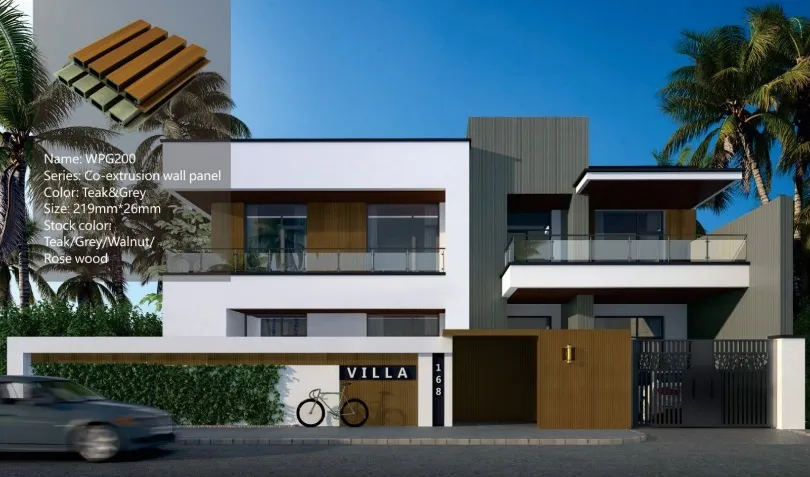
Applications: Where WPC Wall Panels Shine Outdoors
WPC wall panels aren't just a one-trick pony—their versatility makes them suitable for a wide range of outdoor applications, from residential patios to commercial complexes. Let's explore some of the most popular uses and how their UV resistance adds value in each scenario.
Residential Exteriors: For homeowners, outdoor spaces are personal retreats. WPC wall panels are perfect for accent walls around patios, privacy screens for pools, or full exterior cladding for modern homes. Imagine a backyard oasis with a WPC-clad outdoor kitchen wall, where the rich wood-grain texture stays vibrant even after years of summer sun. Or a front porch with WPC panels that resist fading, ensuring your home's curb appeal remains strong for decades. In regions like Saudi Arabia, where summer temperatures can exceed 45°C (113°F), WPC's heat resistance and UV stability make it a no-brainer for residential projects.
Commercial Spaces: Businesses rely on outdoor aesthetics to attract customers and create memorable experiences. Restaurants with outdoor dining areas use WPC wall panels to create cozy, inviting atmospheres that withstand rain, sun, and heavy foot traffic. Hotels use them for poolside cabanas or exterior accent walls, ensuring their properties look luxurious year-round. Retail storefronts benefit from WPC's customizable colors and textures, allowing brands to reinforce their identity while keeping maintenance costs low. For example, a café in Riyadh might use warm-toned WPC panels to create a welcoming outdoor seating area—even after five years of intense sunlight, the panels still look brand-new, reducing the need for expensive renovations.
Hospitality and Leisure: Resorts, golf clubs, and amusement parks often have large outdoor areas that need to withstand high traffic and harsh weather. WPC wall panels are ideal for these settings, as they're scratch-resistant, easy to clean, and UV-stable. A beachfront resort might use WPC panels for outdoor showers or changing room walls, where saltwater and sun would quickly degrade wood. A theme park could use colorful WPC panels for ride queues or concession stands, ensuring the vibrant colors don't fade even under constant sunlight.
Public Spaces: Municipalities and schools are also turning to WPC for outdoor projects. Park pavilions, school playground walls, and community center exteriors all benefit from WPC's durability and low maintenance. Unlike wood, WPC doesn't splinter, making it safer for children, and its UV resistance ensures public spaces remain attractive without draining maintenance budgets.
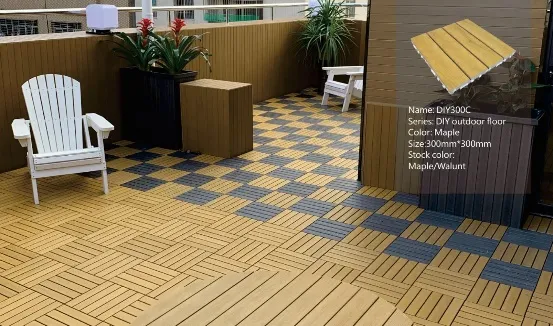
Choosing the Right WPC Wall Panel Supplier: What to Look For
Not all WPC wall panels are created equal—and the key to getting a product that truly resists UV rays and lasts lies in choosing the right supplier. As a building material supplier with years of experience, we know what separates a reliable partner from a fly-by-night vendor. Here are the top factors to consider when selecting a wpc wall panel supplier:
Quality Certifications: Reputable suppliers will have their products tested by third-party labs to verify UV resistance, durability, and safety. Look for certifications like ISO 9001 (quality management), ASTM D4329 (UV resistance testing), or CE marking (for European markets). These certifications ensure the panels meet strict industry standards and have been rigorously tested for performance.
Customization Options: Every project is unique, so your supplier should offer flexibility in colors, textures, sizes, and thicknesses. Whether you need a custom wood grain pattern for a luxury home or a bold color for a commercial project, a good supplier will work with you to create panels that fit your design vision. Don't settle for a one-size-fits-all approach—look for suppliers that offer tailored wpc wall panel solutions.
UV Resistance Guarantees: A confident supplier will stand behind their product's UV resistance with a warranty. Look for guarantees of 10+ years against fading or color change—this shows they believe in the quality of their UV stabilizers and manufacturing process. Be wary of suppliers who can't provide clear warranty terms or test data to back up their claims.
After-Sales Support: Even the best products need support. Choose a supplier that offers technical assistance for installation, troubleshooting, and maintenance. This is especially important for large projects, where guidance from experts can save time and money. A supplier with a local presence (like a Saudi Arabia building materials supplier) will also be more responsive to your needs, ensuring timely delivery and support.
To help you compare options, here's a breakdown of different WPC wall panel solutions offered by leading suppliers, highlighting their UV resistance and key features:
| Solution Name | Thickness (mm) | UV Resistance Rating* | Fire Rating | Key Features | Ideal Applications |
|---|---|---|---|---|---|
| Standard WPC Wall Panel | 12-18 | 4/5 | Class B | Wood-grain texture, 10-year UV warranty | Residential patios, accent walls |
| Premium UV-Resistant WPC Panel | 15-25 | 5/5 | Class A | Enhanced UV stabilizers, anti-slip surface | Commercial exteriors, high-traffic areas |
| Textured Stone-Look WPC Panel | 20-30 | 4.5/5 | Class B | Mimics natural stone, fade-resistant pigments | Hotel lobbies, retail storefronts |
| Fire-Retardant WPC Panel | 18-22 | 4/5 | Class A (for hospitals/schools) | Low smoke emission, UV-stable additives | Public buildings, healthcare facilities |
*UV Resistance Rating: 5/5 = minimal color change after 2,000 hours of accelerated UV testing; 4/5 = minimal change after 1,500 hours.
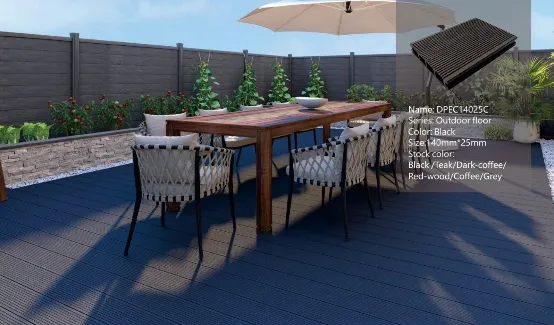
Installation and Maintenance: Keeping WPC Panels Looking Great
Even the most UV-resistant WPC wall panels need proper installation and care to reach their full lifespan. Here's what you need to know to ensure your panels stay vibrant and durable for decades.
Installation Tips:
1.
Surface Preparation:
WPC panels can be installed on wood, concrete, or metal substrates, but the surface must be flat, clean, and dry. Any bumps or debris will show through the panels, so take time to sand or level uneven surfaces.
2.
Fastening:
Use corrosion-resistant screws or clips designed for WPC. Avoid nails, as they can split the panels. Leave a 3-5mm gap between panels to allow for thermal expansion—WPC expands and contracts slightly with temperature changes, and gaps prevent warping.
3.
Orientation:
Install panels with the tongue-and-groove system facing downward to prevent water from seeping into the joints. For vertical installations, ensure the top edge overlaps the bottom edge to channel water away.
4.
Professional Help:
While DIY installation is possible for small projects, large or complex installations (like full exterior cladding) are best left to professionals. Experienced contractors will know how to handle expansion gaps, substrate preparation, and weatherproofing to ensure the panels perform optimally.
Maintenance Made Easy:
One of the biggest perks of WPC wall panels is their low maintenance. Unlike wood, they don't need staining, sealing, or painting. Here's how to keep them looking their best:
1.
Regular Cleaning:
Rinse panels with a garden hose every 3-6 months to remove dirt and debris. For stubborn stains (like bird droppings or oil), use a mild soap and a soft brush—avoid abrasive cleaners or power washers, which can damage the surface.
2.
Inspect Annually:
Check for loose fasteners, cracks, or signs of damage. Tighten any loose screws and replace damaged panels promptly to prevent moisture from seeping behind the wall.
3.
Avoid Harsh Chemicals:
Bleach, ammonia, and solvent-based cleaners can break down the UV stabilizers in WPC panels, reducing their resistance over time. Stick to gentle, pH-neutral soaps.
Real-World Success: Case Studies in UV Resistance
Numbers and tests are one thing, but real-world results tell the true story of WPC wall panels' UV resistance. Let's look at two case studies that showcase how these panels perform in harsh outdoor conditions.
Case Study 1: Residential Villa in Jeddah, Saudi Arabia
In 2018, a homeowner in Jeddah, Saudi Arabia, chose WPC wall panels for their villa's exterior accent walls and patio enclosure. The region is known for extreme heat (summer temperatures averaging 38°C/100°F) and high UV index levels (often exceeding 11, which is "extreme"). The panels selected were a premium UV-resistant WPC solution with enhanced stabilizers and a dark walnut finish.
Five years later, the panels show minimal color change—just a slight softening of the walnut hue, barely noticeable to the untrained eye. There's no warping, cracking, or brittleness, even in areas directly exposed to sunlight for 8+ hours daily. The homeowner notes that they've never needed to stain or seal the panels, just rinse them with water once a year. "We chose WPC because we wanted something low-maintenance that would last," they said. "It's exceeded our expectations—our neighbors still comment on how new the panels look, and they can't believe it's been five years!"
Case Study 2: Commercial Café Chain in Dubai
A popular café chain in Dubai wanted to upgrade the outdoor seating areas of 10 locations, replacing aging wooden walls that required annual staining and often faded within months. They partnered with a local wpc wall panel supplier to install light gray WPC panels with a smooth, modern texture.
After three years of daily sun exposure (Dubai's UV index averages 8-10 in summer), the panels remain bright and uniform in color. Customer feedback has been overwhelmingly positive, with many noting the "fresh, clean look" of the outdoor areas. The chain's facilities manager reports a 70% reduction in maintenance costs compared to the wooden walls, as there's no need for staining, sealing, or repairs. "WPC was a game-changer for us," they said. "We can focus on serving customers instead of maintaining walls—and our outdoor spaces still look brand-new, even in Dubai's harsh climate."
The Future of WPC Wall Panels: Innovations in UV Resistance
As demand for durable, low-maintenance outdoor materials grows, WPC technology continues to evolve. Manufacturers are investing in research to make these panels even more UV-resistant, eco-friendly, and versatile. Here are some of the trends shaping the future of WPC wall panels:
Advanced UV Stabilizers: New generations of UV stabilizers are being developed to withstand even harsher conditions, such as the extreme UV levels in desert climates like Saudi Arabia. These stabilizers are more efficient at absorbing radiation and have longer lifespans, potentially extending panel warranties to 20+ years.
Sustainable Formulations: Suppliers are increasingly using bio-based plastics (made from plant materials like corn starch or sugarcane) and recycled wood fibers to reduce their environmental footprint. These "green" WPC panels offer the same UV resistance as traditional formulations but with a lower carbon footprint.
Smart Integration: Imagine WPC wall panels with built-in solar panels or LED lighting, turning exterior walls into energy sources or ambient light features. While still in development, these innovations could revolutionize outdoor design, combining functionality with durability.
Custom Textures and Finishes: 3D printing technology is allowing suppliers to create hyper-realistic textures, from rough-hewn stone to smooth concrete, all with the same UV-resistant properties. This means more design freedom for architects and homeowners, without sacrificing performance.
Conclusion: Invest in UV Resistance, Invest in Longevity
Outdoor spaces are more than just walls and panels—they're where we live, work, and connect with others. When choosing materials for these spaces, UV resistance isn't a luxury; it's a necessity. WPC wall panels offer a solution that's as beautiful as it is durable, combining the warmth of wood with the resilience of plastic to stand up to the sun's harshest rays.
Whether you're a homeowner building a backyard oasis, a business owner upgrading a commercial space, or an architect designing the next iconic building, WPC wall panels deliver. They reduce maintenance costs, enhance curb appeal, and provide peace of mind knowing your outdoor areas will look great for decades. And with the right wpc wall panel supplier—one that prioritizes quality, customization, and support—you can turn your vision into reality.
So, why settle for materials that fade, warp, or require constant upkeep? Choose WPC wall panels, and invest in outdoor spaces that last. After all, the best memories aren't made in spaces that deteriorate—they're made in spaces that endure.
Tags:
Recommend Products










